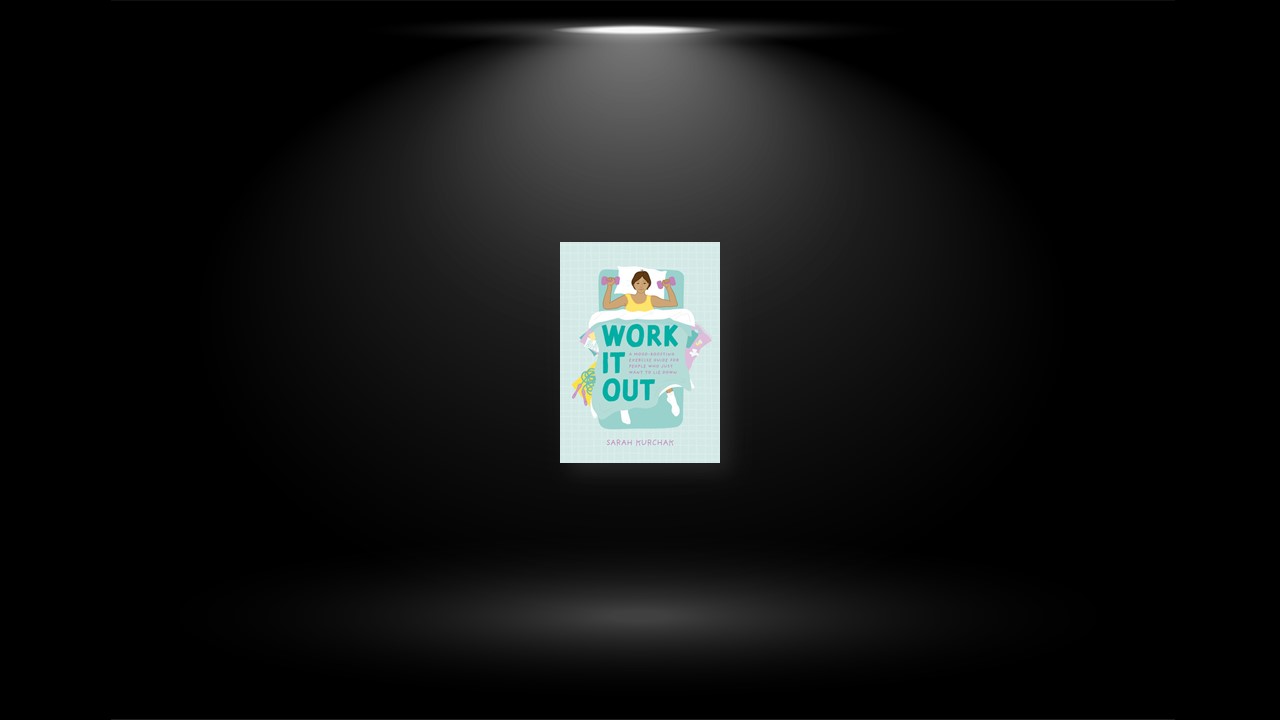The Frenemy Within
The perfect exercise is one that you will actually entertain the thought of doing. The perfect body is a breathing one. Anything that serves those ends is worth considering. Everything else is noise. Keep the information and the messages that work for you and chuck the rest.
Every time you start planning a new workout or new training regimen, think about why you want to try it. If you’re doing it for your health, that’s great. If it’s something you used to like doing and you think you might enjoy doing it again if you can just push through the misery and inertia? That works, too. But if you’re just doing it because you think you should, or if it becomes just another way to punish yourself, that doesn’t work.
Developing a filter that will enable you to reject bad health-related information and keep the good—and minimize the harm that the bad information can cause you—is a lot like developing muscle or cardiovascular capacity. It takes a lot of repetition to build it and maintain it. But each time you put in that effort, you get a bit stronger. To help you get there, this book includes suggestions for how to change your perspective right alongside more common training tips.
Get Moving—Or at Least Get Up
struggle—once you’ve made that massive effort to start, subsequent workouts will most likely start to seem more approachable and manageable. And the more movement you do, the more proof you have that you can do it. But even the perkiest and most determined fitness buff has off days. It’s perfectly normal to feel unmotivated, tired, or bored sometimes. And it’s probably going to happen more frequently if you’re already existing in a constant state of panic, feeling like a hollow shell of yourself, or both.
Work with your natural schedule (and don’t feel guilty about it). When planning a workout, you will most likely need to keep in mind your other commitments and the time constraints of whatever resources you’re using. What you don’t have to consider, though, is any notion of when is the “right” time to exercise, or any of the weird ways our society moralizes early birds and romanticizes getting up at four a.m. to cram in a five a.m. cycling class before work.
Remove as many potential obstacles as you can. Exercise can be daunting enough when you’re not feeling your best. When you add preparation and cleanup to the mix, it can quickly start to feel like way too much to even bother trying. If the act of getting changed into workout gear feels like too much effort, think about workarounds that are comfortable for you. Can you wear a sports bra to work and head straight to a cardio session after? What about sleeping in some of your gear, rolling out of bed, and waking up with some stretching? If that still feels like a pain in the ass, what about working out in what you’re already wearing?
Just take a bite. If a whole workout is too intimidating, start with a warm-up and see how much you can add to it after that. There’s a good chance you’ll feel like continuing once you’re already moving. But if you don’t, you’ve still completed a decent warm-up.
Have backup plans. Don’t be afraid to use them. There’s absolutely nothing wrong with saying “screw it” and taking another rest day. If you’d prefer to have other options you can fall back on, though, it helps to keep have a few go-to alternate plans. If you can’t face the gym, what about going for a walk? If you can’t bear to leave the house, what about putting on a workout video and seeing how that feels? If you can’t get out of bed, what about doing some moves there?
That Counts
Your workout doesn’t have to look like a separate activity at all. If even the “fun” exercises feel insurmountable, keep in mind that they’re just a step or two beyond what you’re already doing. The simple act of living your life involves all sorts of movements. Moving to and from places, even if just to the bathroom and back. Showers. Cooking. Dishes. Laundry. Tidying. Fidgeting. Tossing and turning. A general flailing of limbs and cursing the universe. And so much more. All of these activities recruit your muscles and cardiovascular system. They all add up. They count, too.
Sitting down and standing up: Grab a chair and stand in front of it. Sit down. Stand up. Repeat as many times as you want. This functional and relatively unannoying squat alternative works your calves, quads, hamstrings, and glutes and comes with a built-in resting spot when you’re done.
Lying down and standing up: If you’re looking for a full-body variation of the previous move, or if you just want to be more dramatic, you can take it to the floor. Lie down. You can spend some time cursing the world and/or declaring that this is where you belong if that’s the kind of mood you’re in. Then get yourself to a standing position by whatever means are most comfortable and functional for you. Repeat as many times as you want. This will work all of your major muscle groups and probably become a decent cardio challenge after the first few reps.
One-minute dance party: If you don’t have the time or energy for a longer dance party, you can always throw on a favorite song for a quick burst. You’ll get a little cardio blast and an instant mood boost.
Random shadowboxing: It’s surprisingly fun to randomly punch (and kick, if you have the space and inclination) the air when you’re alone or with understanding company. Depending on your mood, it could also be a satisfying stress reliever. And there’s a reason why professional fighters continue to make it a part of their training: it’s great for cardio, upper body, core, and coordination.
Staying in bed: If you can’t get out of bed for whatever reason, you can also do random movements there. Arm circles. Side leg lifts. Hip releases. Crunches and leg raises if you want to get fancy. You could attempt a plank if you’re up to it. And there’s always log rolls.
Break it Up
A powerlifter definitionally cannot lift their one-rep maximum—the most weight they are physically capable of lifting—more than once. That’s why it’s called a one-rep maximum. A distance runner can’t run their full race distance at goal pace every time they go out. (The marathon’s origin story, the legend of Pheidippides, is about a man who dies of exhaustion after running a phenomenal distance.) Few boxers would survive for more than a couple of rounds if all they did was whale on each other with no time limit every time they went to the gym.
In each case, these athletes would also be putting themselves at a drastically higher risk of injury and illness—which, in addition to being terrible in its own right, would put their goals even further out of reach. Worst-case scenario, attempting to do too much too hard could literally kill them.
So the powerlifter lifts an amount that will sufficiently challenge them and develop their strength and explosive power. Then they’ll pause to allow their body to rest and their mind to prepare for the next part, and repeat for a responsible number of sets and lifts. The runner takes on smaller distances at various paces and saves the maximum effort for a responsible number of race days per year. Recreational runners may break down their races into intervals of walking and running, too.
If you are depressed, anxious, burned out, or otherwise at odds with the act of existing and everything you’re supposed to do to maintain your existence, taking on too much can overload and overwhelm you. So, like professional athletes, you could strongly benefit from breaking your workout down into components that you can safely finish without risking injury and overtraining. But you also need to break it down into pieces that you can safely start, without risking demoralization and self-reproach and heightened levels of anticipatory anxiety and wondering why you should even bother.
Heavy Stuff
Lifting weights, including your own body weight, makes you stronger. In addition to making you better at picking up heavy stuff—which is pretty cool and useful in and of itself—this can improve your bone and joint health in the present and help to preserve it as you age. Regular weight training can improve your general body mechanics—the way you stand and move in daily life—and might end up boosting your cardiovascular capacity as well. It can also make you look buff, if you’re into that and want to pursue it.
The brain isn’t a muscle, but as we currently understand it, it kind of responds like one when you start lifting. Resistance training makes your muscles bigger, but it also improves the delivery system that provides muscles with nutrients and strengthens the connections between them and everything else going on in your body. This type of exercise also increases the size of certain parts of the brain, stimulates the development of new blood vessels that deliver nutrients to the brain, cultivates the growth of new brain cells, and strengthens connections throughout your nervous system. And this improvement in how your brain functions could also lead to improvements in how it feels.
You don’t even have to push yourself to your breaking point. You should keep lifting only as long as you can lift while maintaining safe and proper form, not until you can’t lift at all. Discomfort and a touch of burning is OK. Pain is not. All the gains that you’ll make in strength training come when you test your capabilities, not your limits.


